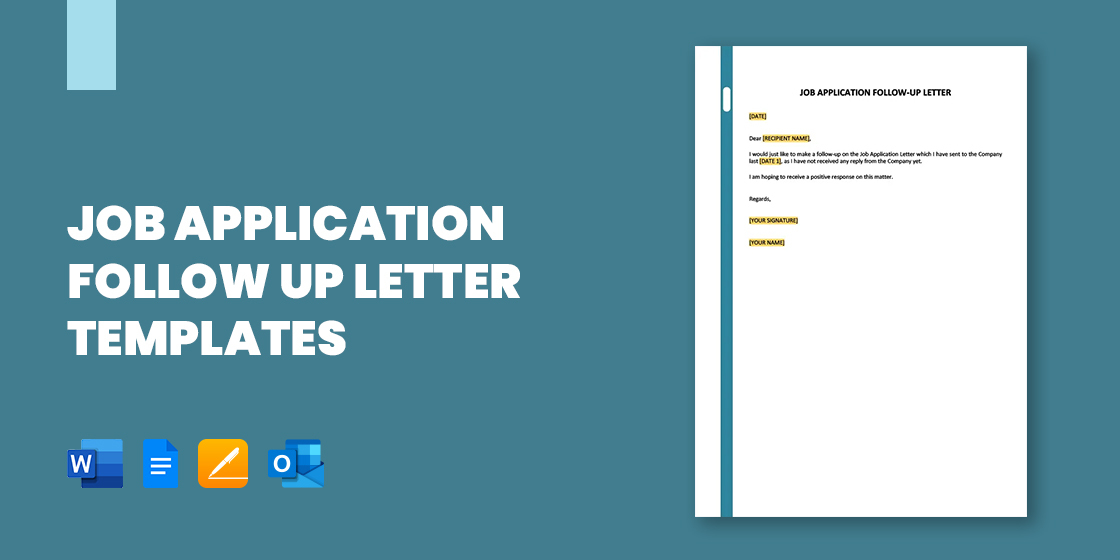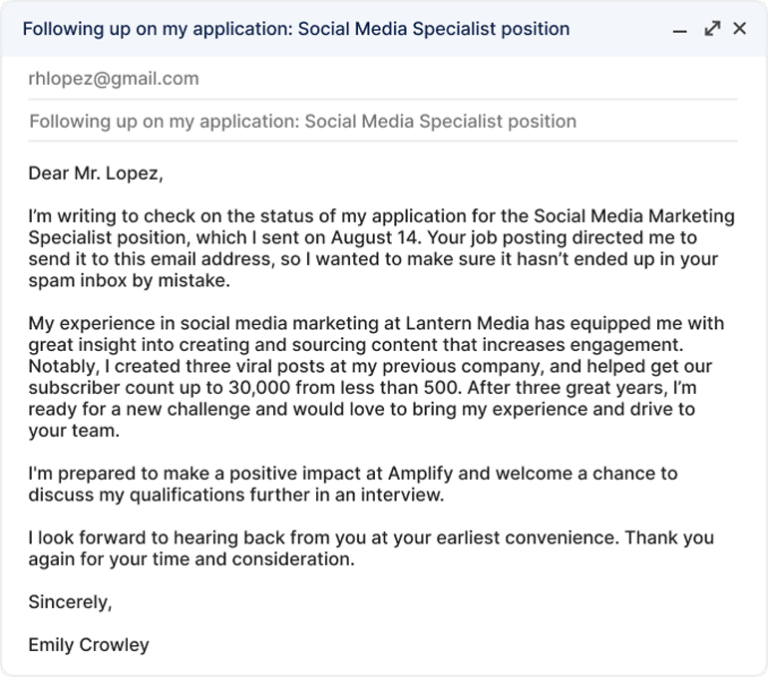Navigating the job market can often feel like a waiting game, but understanding the art of the follow-up can transform that passive waiting into proactive engagement. This comprehensive guide delves into the nuances of following up on your job applications, offering strategic insights to help you stand out and make a memorable impression. By mastering these techniques, you can significantly enhance your chances of securing your desired role.
We will explore the critical importance of a well-timed follow-up, covering when and how to reach out after submitting your application and attending interviews. You’ll discover how to craft compelling emails and phone calls that reiterate your interest and qualifications without being overbearing. Furthermore, we will address common pitfalls to avoid and provide guidance on when to gracefully conclude your follow-up efforts, ensuring you maintain a professional image throughout the process.
Understanding the Importance of Following Up

In the competitive landscape of job searching, the act of submitting an application is often just the first step. A well-executed follow-up can significantly differentiate a candidate and enhance their prospects for career progression. It demonstrates initiative, reinforces interest, and provides an opportunity to reiterate qualifications in a way that may not have been fully captured in the initial application.
Neglecting this crucial step can lead to missed opportunities and a less impactful job search.A strategic follow-up serves as a gentle reminder to the hiring team, ensuring your application remains top-of-mind amidst a sea of other candidates. It’s an investment of a small amount of time that can yield substantial returns, potentially influencing the decision-making process and showcasing your professionalism and commitment.
Benefits of a Timely Follow-Up
A well-timed follow-up can offer several distinct advantages to a job applicant, helping them stand out and solidify their candidacy. These benefits extend beyond simply getting a response and can contribute to a more positive overall application experience.
- Reinforces Interest and Enthusiasm: A follow-up clearly communicates that you remain highly interested in the position and the company. This can be a deciding factor for employers weighing between equally qualified candidates.
- Demonstrates Proactiveness and Initiative: Taking the initiative to follow up shows that you are not passively waiting for a response but are actively engaged in your job search and eager to move forward.
- Provides an Opportunity to Add Value: A follow-up can be used to share any new, relevant information, such as a recently completed project or a new skill acquired, that further strengthens your application.
- Clarifies Application Status: It offers a professional way to inquire about the status of your application and the hiring timeline, managing your own expectations and planning accordingly.
- Shows Professionalism and Attention to Detail: A polite and well-crafted follow-up message reflects positively on your communication skills and your ability to adhere to professional etiquette.
Common Mistakes in Application Follow-Up
Many candidates inadvertently hinder their job search by making avoidable errors when following up on their applications. Understanding these common pitfalls can help you craft a more effective and professional follow-up strategy.
- Following Up Too Soon: Sending a follow-up email within a day or two of submitting an application can appear impatient and may not allow the hiring team sufficient time to review applications. A reasonable waiting period, typically one to two weeks depending on the application instructions, is advisable.
- Following Up Too Frequently: Bombarding the hiring manager or HR department with multiple follow-up messages in a short period can be counterproductive and may be perceived as harassment. Stick to one or two well-timed follow-ups.
- Being Vague or Unprofessional: A follow-up email that lacks clarity, contains typos, or uses an overly casual tone can detract from your professionalism. Ensure your message is concise, polite, and error-free.
- Not Personalizing the Message: Sending a generic follow-up to all companies without tailoring it to the specific role or organization shows a lack of genuine interest. Reference the specific position and company in your message.
- Failing to Reiterate Key Qualifications: A follow-up is an excellent opportunity to briefly remind the employer of your most relevant skills and experiences that align with the job requirements, without simply repeating your resume.
- Demanding an Immediate Response: Phrasing your follow-up in a way that implies an expectation for an immediate answer can be off-putting. Instead, express your continued interest and understanding of their review process.
Determining the Right Time to Follow Up

Following up on a job application is a crucial step, but knowing precisely when to do so can be a delicate balance. Too soon, and you risk appearing overly eager or impatient; too late, and your application might be overlooked. This section will guide you in understanding the optimal timing for your follow-up efforts.The ideal waiting period before initiating contact is not a one-size-fits-all answer.
It largely depends on the information provided by the employer and the general hiring timeline for the industry or specific role. A thoughtful approach to timing demonstrates your professionalism and respect for the hiring process.
Standard Waiting Period After Application Submission
Generally, it is advisable to wait at least one to two business weeks after submitting your application before sending a follow-up email or making a call. This period allows the hiring team sufficient time to review initial applications, identify a shortlist of candidates, and begin scheduling interviews. Rushing this process can be counterproductive.
Gauging Follow-Up Timing Based on the Application Process
The application process itself offers valuable clues about when to follow up. Paying close attention to details provided during the application or in the job posting can significantly refine your timing strategy.
- Job Posting Information: Review the job advertisement for any mention of the application deadline or expected hiring timeline. If a specific closing date is provided, wait at least a week after that date.
- Application Confirmation: If you received an automated confirmation email, check if it includes an estimated response time or next steps. Some systems may indicate when candidates can expect to hear back.
- Company Hiring Cycles: Larger organizations often have more structured hiring processes with defined timelines. Smaller companies or startups might be more agile, but a reasonable waiting period is still recommended.
- Recruiter or Hiring Manager Contact: If you had direct contact with a recruiter or hiring manager during the application process (e.g., a brief introductory call), they might have provided a timeline for next steps. Adhere to any guidance they offered.
Factors Influencing Follow-Up Urgency
While a standard waiting period is a good starting point, certain factors can justify an earlier or more direct follow-up. Understanding these nuances can help you make informed decisions about your communication timing.
- Specific Interview Commitments: If you were explicitly told you would hear back by a certain date for an interview or next step, and that date has passed without communication, it is appropriate to follow up promptly.
- Networking or Referral: If you were referred by an internal contact or have a strong existing relationship with someone at the company, your follow-up might be slightly more direct, and potentially sooner, but still within a professional timeframe.
- Limited Application Window: For roles with very short application windows or urgent hiring needs, the timeline might be compressed. In such cases, a follow-up after a few business days might be acceptable, especially if the job posting indicated a rapid hiring process.
- Industry Norms: Some industries, particularly fast-paced ones like technology or media, may have quicker hiring cycles. Researching typical timelines for your target industry can be beneficial.
“Patience is a virtue, especially in job seeking. However, proactive communication, when timed appropriately, demonstrates continued interest and professionalism.”
Closure

In conclusion, a strategic follow-up is not merely a formality but a vital component of a successful job search. By implementing the principles of timely, professional, and persistent communication, you can effectively demonstrate your commitment and enthusiasm for a role. Remember to tailor your approach to each stage of the application process and always maintain a positive and respectful tone.
Mastering these follow-up strategies will empower you to navigate the hiring landscape with confidence and significantly boost your prospects of landing your dream job.